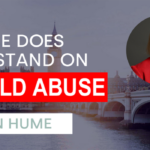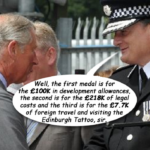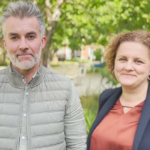Coming Soon to North Yorkshire?
by TIM HICKS
~~~~~
Background: The Police, Crime, Sentencing & Courts Bill
Recently demonstrators and protestors have changed tactics. They have avoided violent protest, preferring to use disruption tactics to bring cities and transport to a halt. The sit-down protests in key locations by Extinction Rebellion protestors last year were a classic example of this.
The Police, Crime, Sentencing & Courts Bill would give Police and the Home Secretary increased powers to stop this type of non-violent but disruptive protest. It also brings in measures to protect monuments following the widespread vandalism against statues and monuments in the Black Lives Matter protests, with a new offence making damaging a statue punishable by up to ten years in prison.
The bill would also make trespass a criminal offence to allow the Police to deal with the problems caused by unauthorised encampments. The Police would have the power to seize vehicles and arrest trespassers. Conviction for the new offence could result in a fine of up to £2,500, or up to three months in prison.
Introduction: The Bristol Riots
The NYE readership is highly intelligent and articulate and keeps abreast of current affairs, so I am quite sure that all of our readers will have seen the coverage of the rioting in Bristol.
The Police, Crime, Sentencing and Courts Bill is controversial and some people chose to express their opposition to this proposed legislation by marching through Bristol. According to media reports, about 3,000 people assembled to march to protest against the bill. An estimated 400 to 500 of them used the protest march as cover to assemble in force and riot, by attacking the Police and vandalising property.
Police cars were set on fire and the Police – who were completely outnumbered – had to retreat into the Bridewell Police Station and call for reinforcements from other Police Forces. At this point the rioters had seized control of the streets and then vandalised the Police Station by spraying it with graffiti and breaking the windows while the Police watched on. They also damaged civilian vehicles and property including cars parked in spaces in a National Car Park reserved for NHS workers.
Statement by Avon & Somerset Police (A&SP) Chief Constable Marsh below:
“Let’s be clear, the wanton violence and destruction had nothing to do with protest – it was committed by those looking for an excuse to commit disorder. The scenes we witnessed yesterday were shameful and I know will be condemned by the whole city.
We’ve received messages of support from across the policing, emergency service and political landscape. No-one wants to see Police Officers abused or attacked in this way. These men and women put their safety on the line every day to keep the public safe, and do not deserve to be on the forefront of this abhorrent criminal behaviour.
20 of our brave Officers suffered various injuries – including two who suffered more serious injuries which needed hospital treatment. I was at a Bristol station last night and can tell you the feeling of anguish was felt by all our Officers and staff at seeing colleagues injured while on the frontline.
Ahead of every protest or significant gathering, we assess the appropriate level of policing resources. There was no prior intelligence that violent acts would be committed on this scale. No specific organiser was identified prior to the event but we did engage with a number of organisations who had expressed an interest in attending to discourage them due to the current COVID-19 restrictions. We hoped stressing the sacrifices the Bristol community had made over the past year would deter people from attending.
A tactical decision was made to deal with these criminals retrospectively and not make a significant number of arrests last night, which would have impacted significantly on our resources at the scene and created a greater risk of damage to property and injuries to the reduced number of Officers left to deal with the disorder.
What the public will see now is a huge Police investigation in which we’ll be gathering evidence from CCTV, Body Worn Video, social media content and images/video sent in by the public. We are appealing for people to send in footage so all those responsible can be identified – full details of where to send these will be issued on our website and social media later.
This will undoubtedly lead to one of the biggest appeals for wanted suspects that we’ve ever done. There will be significant consequences for behaviour like this and we will leave no stone unturned.
The cost of policing this operation, carrying out the subsequent investigation and repairing and replacing our vehicles and damage to our city centre station will run into the millions. This is money which could have been spent on safeguarding and protecting the most vulnerable in our society.”
Because the organisers of the riot could not be identified I could not get a statement from them, but a comprehensive national media report can be seen here.
A few observations
It seems to me that there are a number of factors in the rioting that have not been fully aired by the media, even though this is a major issue. These are as follows:
- Failure of Police Intelligence
The scale of the rioting caught the Police completely unprepared, because there was no intelligence. This could be because following the furore over the tactics used by undercover Officers in the past, the National Domestic Extremism Disorder Intelligence Unit (NDEDIU), which is responsible for infiltrating extremist groups, is more cautious and less effective in gathering intelligence on extremists.
It may also be the case that the various organisations that plan violence against the Police are more cautious now and better able to detect undercover Policemen. This makes the task of gathering intelligence on them very much more difficult and dangerous than in the past.
As a result, the Police were taken by surprise and completely outnumbered.
- Why Bristol?
One of the questions that has not been asked, but should have been, is why did the rioters select Bristol as their preferred location to assemble and riot?
One reason may be that it is a former slaving port and therefore because of this aspect of its history, a controversial location. However, I believe there is a different explanation.
In June 2020, a group of removed toppled the statue of local philanthropist and slaver Edward Colston from its pedestal and dropped it into Bristol Harbour, while A&SP watched, but did not make any attempt to intervene. No arrests were made at the time, although a number of people were subsequently arrested and are currently awaiting trial accused of causing criminal damage over the incident. Their decision not to take any action was praised at the time by the Mayor of Bristol.
The concern must be that the rioters chose Bristol for a show of force, because they assessed that they would face a similar response from A&SP when they started rioting.
- Criticism of the inconsistent policing of the Sarah Everard vigil by the Metropolitan Police
It has been suggested that senior Police Officers were reluctant to use force due to the criticism the Metropolitan Police received over the way it broke up the vigil for Sarah Everard at Clapham Common, London the previous weekend.
PC Wayne Couzens has been charged with Sarah Everard’s murder and many women gathered on Clapham Common to hold a vigil in her memory. The vigil was broken up by the Metropolitan Police; the same force that PC Couzens is from.
According to the Met it broke up the vigil because it was contrary to the Coronavirus Lockdown Regulations. However, it had previously allowed Black Lives Matter demonstrations which were also in violation of the regulations to proceed. This has –understandably- given rise to allegations that the Police are applying a two tier system of policing to demonstrations, by allowing those they approve of and disrupting any they do not like.
This caused a storm of criticism of the Police handling of the vigil, with calls for the Commissioner of the Metropolitan Police to resign, because the Police response to the Sarah Everard vigil was alleged to be disproportionate and heavy handed.
In these politically correct times, Chief Officers are much more conscious of the impact of media and political criticism on the reputation of the Police. It must be a concern that A&SP did not want to be seen cracking down on a demonstration against increasing Police powers, having previously refused to intervene in a Black Lives Matter demonstration and having seen the criticism Commissioner Dick received over the Met’s inconsistent policing of protests.
- The responsibility of peaceful protesters for the rioting
The presence of large numbers of protesters who were not participating in the violence still assisted the rioters because they could disappear into the crowd and the Police could not isolate troublemakers from the crowd to arrest them.
Those that protested peacefully on Tuesday the 23rd and Friday the 26th of March will have known that there would probably be violence, that they were breaching the Coronavirus lockdown regulations and risking lives. But they still attended.
So in my view anyone that attended any of the protests -even if they did not participate in the rioting- nevertheless has some degree of responsibility for the violence that transpired from it.
- The level of violence employed by the rioters
It is obvious that the rioters came armed and ready to inflict violence and criminal damage.
Some had spray paint to vandalise with graffiti, others brought items like skateboards which while innocent enough on their own could be used as improvised weapons or shields. Others had baseball bats. One man is alleged to have come armed with a home-made spear. He denies the offence. Guardian report here.
More concerning, some rioters had what were described by the media as “fireworks”. Having seen the size of the explosions caused by these “fireworks” it is clear that these were not Guy Fawkes Night bangers. Video here. They appear to me to be pyrotechnics, possibly improvised/home-made. Be that as it may, they were nevertheless thrown at the Police and into the crowd.
Lasers were shone at the Police. I believe this is the first time lasers have been used in a riot in the UK. BBC Report here. It appears to be a tactic copied from the riots in Portland USA last year, when three federal Police Officers were blinded by lasers. This was at first thought to be permanent, but fortunately they recovered their eyesight in time.
The Police were also pelted with bottles, paint and bricks.
The Police Federation accused the mob of trying to murder Officers by setting fire to the van in which they were trapped. Video of this incident here. Photograph of the incident and the man that is believed to have tried to set the Police van on fire is below.

One of the tactics used by the rioters is even more chilling. This Bristol Post article quotes Inspector Andy Roebuck as stating that the perpetrators had come armed with a substance which they squirted onto the visors of Officers, preventing them from seeing properly. Police then had to remove the visors, he went on to say the rioters “then launched missiles at them and targeted isolated or vulnerable Officers and then dragged them out. You had 10 people attacking them, jumping up and down on them.” Chief Constable Marsh has been quoted as saying: “For Officers who were effectively trapped at close quarters, close enough to rip their shields from them and pull their helmets off, there wasn’t space to advance or retreat. It was an incredibly frightening evening for the Officers there.”
I am old enough to remember the murder of PC Keith Blakelock in the Broadwater Farm riots of 1985. Briefly, a group of eleven constables and a sergeant were protecting firefighters during a riot when they were overwhelmed by the rioters. PC Blakelock was surrounded while he was on the ground, kicked and stamped on, his helmet was ripped off and he was stabbed in the neck. His colleague PC Richard Coombes was also overwhelmed and had his helmet ripped off. He was then slashed across the face, his neck was cut open and he was stamped on so severely that his jaw was broken. PC Michael Shepherd, was hit with a spike and collapsed on the ground next to PC Coombes and both were kicked by the crowd. PC Coombes never recovered from his injuries.
This is very similar to the description given by Chief Constable Marsh above. The conclusion is inescapable that the rioters were trying to rip the Officer’s helmets off and drag then into the crowd, so they could overwhelm them and inflict similar injuries.
- The organisation of the rioters
It has to said that the rioters were exceptionally well organised at each stage of the riot. Prior to the riot they maintained good security, during the riot they used a higher level of force and more sophisticated weapons than have been seen before and they had legal representation arranged and organised through a website.
-
- There was no advance intelligence of the riot, so the rioters operational security was good, with nothing seeping out via social media or Police informants.
- Some of the rioters were from Bristol, but others have travelled from other parts of the country to Bristol. They were able to do this bringing with them the weapons and equipment they used without detection by the Police.
- The rioting occurred on three nights, Sunday the 21st, Tuesday the 23rd and Friday the 26th of March 2021 so some of the rioters had accommodation arranged. Further this accommodation was not raided by the Police, so they appear to have been able to keep these locations secret. Again indicating effective security.
- After the riots, posters appeared all over Bristol congratulating the rioters and giving advice on how to destroy evidence, advising them not to talk to the Police, not to put footage online or identify themselves and others on line. Showing the rioters were forensically aware and had taken steps to defeat the Police investigation they knew would follow the rioting.

-
- The posters gave the contact details for solicitors, who had been arranged in advance for those who were arrested. It is unclear who arranged this. These two websites https://bristolabc.wordpress.com/ and https://greenandblackcross.org/ give advice to rioters on what to do if they are arrested. One of the websites gives advice on how to avoid Police electronic surveillance of their ’phones and computers, demonstrating that the rioters are electronic surveillance aware.
- The poster gives advice on how to write witness statements describing Police brutality and how to make complaints against the Police. There were people there who labelled themselves as “Legal Observers” whose purpose is unclear. It may be to act as witnesses in support of allegations of misconduct against the Police. Video clip of a rioter having her hair pulled out by another rioter when he was trying to prevent her arrest, then alleging to the media that the Police had done it here.
Full text of the poster can be read in this Bristol Post article
- Overall assessment
The riots in Bristol were obviously organised and are probably the most sophisticated ever seen in the UK. They may also be amongst the most violent. I am very surprised that no Police Officers were seriously injured or killed.
I suspect that those who went to the protest looking for trouble will have by now assessed the outcome and concluded that they scored a major victory over the Police.
In my opinion – as it currently stands – they probably did.
The rioters demonstrated that they could organise securely and apply a much higher level of violence than has been seen in disorder in the UK since 1985. They were able to seize control of the streets and force the Police onto the defensive. They then humiliated the Police by making them watch while they vandalised a Police station and Police cars with impunity. Very few arrests have been made.
I say “as it currently stands” because if the investigation into the riots identifies large numbers of the rioters and they are convicted and robustly sentenced by the courts, this will change this perception and may help deter further disorder. We shall see.
Photographs of those sought by Police can be seen by clicking this link: Avon & Somerset Police Images released as part of investigation into Bristol disorder. The investigation into the riots is ongoing and the images will be added to as the investigation progresses.
The role of the media when covering rioting
The media must be balanced and impartial in its coverage of civil disorder and this presents particular challenges for the media. Going into the crowd puts journalists at risk, both from the rioters and from any action the Police may take. It has been alleged that Police confronted a journalist and in response Avon and Somerset Police issued this statement:
“We’re aware of a video showing a journalist being confronted by Officers during last night’s protest in Bristol. We’re making efforts to contact him. A free press is a cornerstone of democracy & we fully respect the media’s vital role in reporting events fairly and accurately”
However, if journalists stay safely behind the Police lines, they are accused of bias and not seeing events from the rioter’s perspective. We should not forget that one journalist was attacked by the rioters. It is unclear why, but it may have been because they did not want his footage to be used to identify them.
Following any crime, the media has a duty to assist the Police in its investigations by publishing appeals for information. Many media sources have published photographs of those the Police wish to speak to like the one below.

Other than the use of the word “Fireworks” referred to above, I think that the media coverage has been balanced and accurate. The footage of the events has shown what actually unfolded on all three nights of disorder.
The morality of protestors and the implications for North Yorkshire
Protestors assert that they are more virtuous and intelligent than the rest of us. They then attach themselves to whatever issue is current at the time e.g. Extinction Rebellion, outrage over the death of Sarah Everard, Black Lives Matter, concerns about the erosion of civil liberties caused by the Police, Crime, Sentencing and Courts Bill etc. and assert they are acting for a higher moral purpose.
This false proposition is then used to justify them breaking the law, doing whatever they please and inflicting whatever level of violence they deem appropriate on the Police. But are absolved from any responsibility for the consequences of their actions because they are acting for a higher moral cause. A classic example is Extinction Rebellion refusing to let an ambulance pass during the disruption they caused.
The violent disorder at Bristol occurred at one Police station. A&SP had to call for assistance from several forces before order could be restored. If the disorder had been coordinated with attacks on other stations in the area, the Police may well have been overwhelmed. The concern must be that, encouraged by their success in Bristol, other riots will be organised at multiple locations.
The inconsistent approach taken by many Police forces to enforcing the Coronavirus Lockdown Regulations means it is now impossible for the Police to avoid the allegation of bias when trying to enforce the regulations on protests, further inflaming the situation.
As an example, the response by North Yorkshire Police (NYP) to members of the public that wanted to make a tribute to Sarah Everard was very well handled (NYP Statement here). But how can NYP prohibit a protest on the grounds that it contravenes the lockdown regulations, when Chief Constable Winward has refused to apply the regulations to herself and over thirty of her Officers? NYE report here.
I remember the riots across many towns and cities across the UK in 1981. The willingness of protestors to attach themselves to any cause, coupled with the level of organisation and security they obviously have, means that any demonstration for any cause anywhere could be taken over in the same way as the Bristol event was.
I therefore fear that we will see other acts of disorder this year in many British towns and cities, including some in North Yorkshire.
Right of Reply
If you are mentioned in this article and do not agree with the views expressed in it, or if you wish to correct any factual inaccuracy, please let me know using the letters@nyenquirer.uk e mail address. Your views and a correction will be published if appropriate.




![Minneapolis and North Yorkshire [REDUX]](https://nyenquirer.uk/wp-content/uploads/2020/07/ARREST-150x150.jpg)








